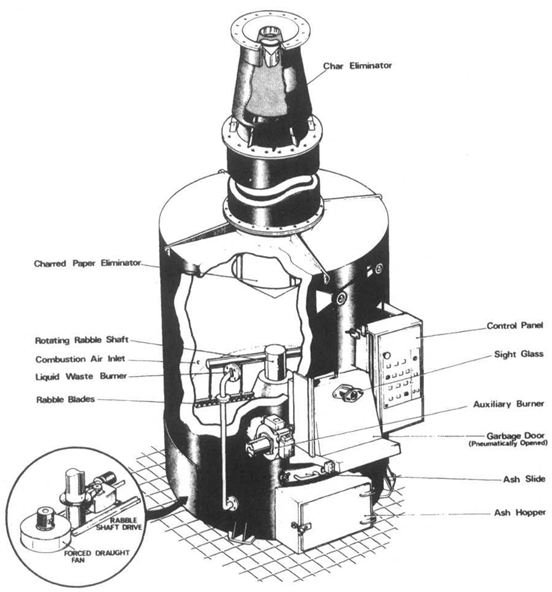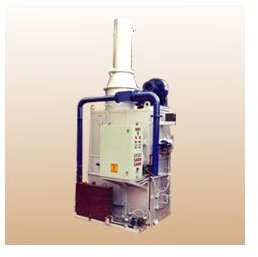Waste incinerators - Materials burnt in a waste incinerator on board ships
How to handle waste?
Due to Marpol annexures getting stricter day by day, ordeal related to disposing of the ship’s waste at sea is at an all time high. So what can be done about this waste? Accumulating it till the next port of call is the only option but what if the voyages are long? Also collecting the waste for a longer time is unhygienic and it also generates an unbearable stench. If it’s chemicals or oily toxic substances then it is better to dispose it as soon as possible as it might emit poisonous gases or foul odour. We had already discussed how bilge water is handled but these wastes cannot be pumped overboard.
Incinerators are used for this purpose. Incinerators burn the food, sewage and oil waste at high temperatures, reducing the waste to disposable ash. These wastes are present in almost every type of ship and in this article we will see how the incinerator works and what is it importance.
Construction
Incinerator is in the shape of a vertical cylindrical chamber with an inverted funnel shaped chimney at the the top. The cylindrical chamber consists of a burning chamber just as in case of oil fired burners, which are lined with refractory materials at the inside. An oil fired burner is provided to initiate the ignition process. It is extremely important that the temperature inside the cylinder is controlled and for this reason thermostats are used. To provide an uninterrupted flow of air for the combustion, forced draft fans are provided. The air supplied is directed upwards in swirls with the help of strategically designed ports.
A rotating shaft with blades is attached at the center, which helps for a faster combustion process and also prevents incomplete combustion. The ash and the residue thus generated due to the combustion is forced at the periphery by this rotating shaft. The ash is pushed into an ash hopper and it gets collected there. A door is provided to dump the waste inside the incinerator. This door pneumatically operated and when opened shuts down the fan and the burner automatically.
Not all the ash gets collected in the ash hopper. Some of the ash due to the forced air goes up to the chimney with the smoke. To remove this ash from the smoke a char eliminator is used. A char eliminator is similar to a filter paper. A sight glass is provided at the side of the incinerator to keep a watch at the burning process. All the processes are controlled with the help of a control panel that is fitted on or near the incinerator.

Working and disposing
Solid waste is put inside the incinerator through the waste door, in properly arranged stacks so that the chances of incomplete combustion are minimized. The oily sludge or waste oil is not directly put into the combustion chamber neither it is put through the waste door. A separate tank is made which has its outlet into the combustion chamber. The oily sludge is first heated up to a temperature which can facilitate the difficult process of burning oily waste. Once optimum temperature is reached, the oil is passed into the combustion chamber.
The burner then burns the mixture at a thermostatically controlled temperature so as to induce a complete combustion. The force draught fan provides continuous supply of air and the rotating shaft creates the required swirling of air. The ash that is created is collected in the ash slide. This ash can be disposed to the sea or stored to dispose it at the next port.
In many ships these incinerators are not used properly and it should be made a practise so that all staff right from the junior engineer, deck cadet to the chief engineer and master are aware of its use. This would go a long way in improving the quality of sea water as well as reduce stress on their minds in that they are doing everything as per the maritime law.
Reference
Introduction to marine engineering by D A Taylor (1996)
Image Credits
Incinerator Sketch: D A taylor, Introduction to marine engineering 2nd Edition
